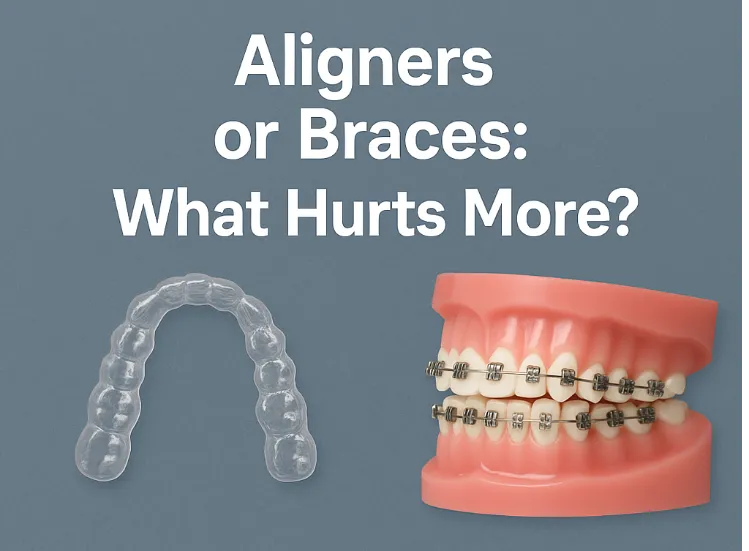
In today's social-media-driven world, having a straight, healthy smile has become more than a cosmetic goal, it’s a part of self-care, confidence, and well-being. If you aren’t one of those fortunate individuals who have perfect straight teeth or if your teeth have shifted or worsened with time, orthodontic treatments become a necessity. But a common question remains: Is orthodontic treatment painful, and what to expect during alignment. In this blog, we will explore why straight teeth are important not only from a cosmetic standpoint but also from a health and lifestyle aspect. Moreover, the different types of teeth straightening methods, including braces and aligners, and some tips for Pain relief during orthodontic treatment.
Straight teeth aren't just about looks. While a straight smile boosts esteem and confidence, it offers more than just cosmetic benefits. Misaligned teeth can lead to various oral health issues. For example, they can lead to tooth decay, gum disease, jaw misalignment, and even TMJ (temporomandibular joint) dysfunction . TMJ dysfunction can lead to chronic headache, neck pain, and/or difficulty chewing and speaking.
The alignment of your teeth affects how your upper and lower teeth meet, commonly known as your bite. A misaligned bite can cause uneven tooth wear, a higher risk of tooth fractures, and added strain on the jaw muscles and joints. So it is not surprising that more and more adults are seeing orthodontists for treatment, not just for a better smile, but for better oral health.
Straighter teeth make it easier to clean between the teeth and along the gum line, reducing the risk of plaque build-up and cavities. They can also improve speech and chewing efficiency. But let’s not forget the psychological benefits. A straighter smile can significantly impact your confidence, influencing your social interactions, professional life, and overall self-perception.
Teeth straightening is not restricted to metal braces. Over time, different treatments have emerged to
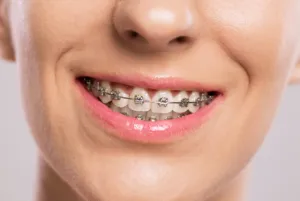
For many years, metal braces have been used as the most effective solution for teeth straightening. They feature metal brackets attached to the teeth and linked by wires. Though not the most aesthetically pleasing, they are effective for mild to even severe cases and generally less expensive.
Pros
Traditional braces are known for their effectiveness in correcting a wide range of dental issues. They are durable and can withstand the wear and tear of daily life, making them a reliable option.
Cons
A major disadvantage of traditional braces is how visible they are; the metal brackets and wires are highly visible due to their metallic shine, which can be a worry for some people, especially adults. Additionally, they may cause discomfort at times, especially after tightening, since the pressure on the teeth can result in soreness.
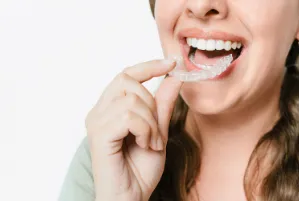
These clear plastic trays are customised according to each individual’s dental structure. They are barely visible, a popular option among adults, and are most effective for mild to moderate alignment problems.
Pros:
Clear aligners are popular for their nearly invisible appearance, allowing individuals to straighten their teeth without the noticeable metal of traditional braces. They are also removable, which means patients can take them out during meals and while brushing or flossing, promoting better oral hygiene. Many find them more comfortable than traditional braces, as they do not have the same brackets and wires that irritate.
Cons:
Clear aligners require discipline, as they must be worn for 20-22 hours a day to be effective. They might not be suitable for severe misalignments, as more complex dental issues may need the precision of traditional braces or other orthodontic methods.

These braces resemble traditional ones but use a unique clip rather than elastic bands to secure the archwire. This reduces friction and can lead to shorter treatment durations.
Pros
Self-ligating braces offer the advantage of fewer dental visits because they do not require the frequent tightening that traditional braces need. This can be a great convenience for patients. Many users also report that these braces are more comfortable than the traditional option since they use a sliding mechanism that reduces friction.
Cons
On the downside, self-ligating braces tend to be more expensive than traditional braces due to the advanced technology and materials used in their design.
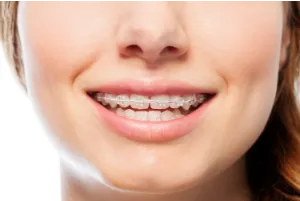
Made of tooth-colored materials, ceramic braces are less noticeable than metal ones. However, they are more fragile and can stain easily if not cared for properly.
Pros:
Ceramic braces are designed to blend in with the natural colour of your teeth, making them a more discreet option compared to traditional metal braces. This aesthetic appeal makes them particularly popular among adults and teens who are concerned about their appearance during treatment.
Cons:
They can be fragile and are more prone to breakage than metal braces, which can be a downside for some. They also come with a higher price tag and may be susceptible to staining, especially if proper care isn’t taken with certain foods and beverages.
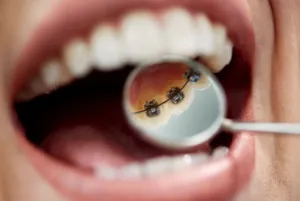
These are metal braces attached to the back of your teeth, making them invisible from the front. They are customised specifically for each patient but tend to be the priciest choice.
Pros:
Lingual braces are placed on the back of the teeth, making them completely invisible from the front. They are customised to fit each patient’s dental structure, which leads to effective treatment outcomes.
Cons:
The cost of lingual braces is usually higher due to the customization and the expertise required to install and adjust them. Additionally, some patients may experience speech difficulties initially as they adjust to the braces’ presence on the tongue side of the teeth.
If you are considering getting your teeth straightened, either with aligners or braces, you should be prepared for some discomfort.
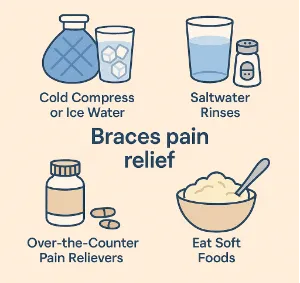
Here are some of the tips to manage pain with braces or aligners.
Teeth straightening, either with braces or aligners, comes along with some sort of discomfort. Metal braces cause pain in the gums and lead to irritation due to metal brackets. Whereas, aligners may cause initial discomfort, which soon fades away. Different brands now offer clear aligners as an alternative to braces for a comfortable smile journey.




Curated the best for your knowledge
.webp) Tooth Resorption: Causes, Symptoms, and Treatment Options
Tooth Resorption: Causes, Symptoms, and Treatment OptionsTooth resorption often goes unnoticed until real damage appears. Many people discover it during a routine dental visit and feel a wave of fear, wondering how such a hidden process could silently weaken their smile. The truth is that tooth resorption is more common than most expect, and early detection can make all the difference. By understanding why it happens, how it progresses, and which treatments actually work, you can protect your teeth with confidence. You don’t have to feel overwhelmed. When you know what to look for, you stay one step ahead and safeguard your long-term oral health.
Read More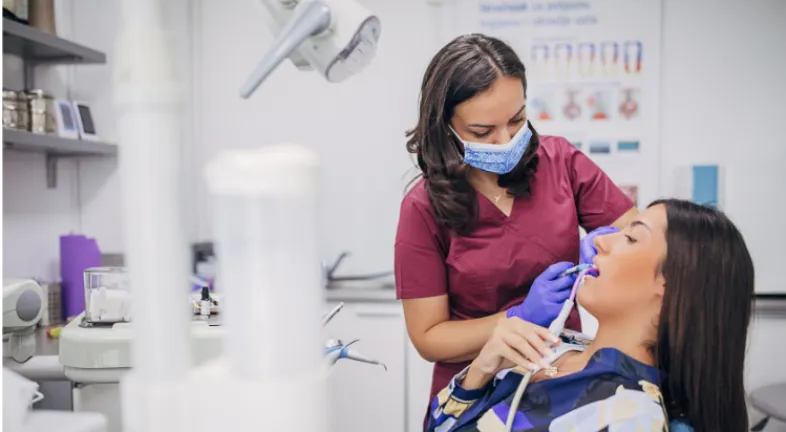 Teeth Troubles Explained: Causes, Symptoms & Fixes
Teeth Troubles Explained: Causes, Symptoms & Fixes Teeth problems happen when we take our pearly whites for granted. When our smile is nice and healthy, we don’t think much about it. And the moment things go south, we panic. Saving, or remaking, that smile becomes a priority. For some, though, the issues are present right from the start. Misalignment, bite issues, and teeth troubles that are more “structural” in nature. They don’t happen due to neglect; rather, they are given by luck, God, nature, whatever you believe in. That being said, no matter the type of tooth trouble, there’s a solution out there. And we’re exploring all that today, teeth diseases and treatment, one by one.
Read More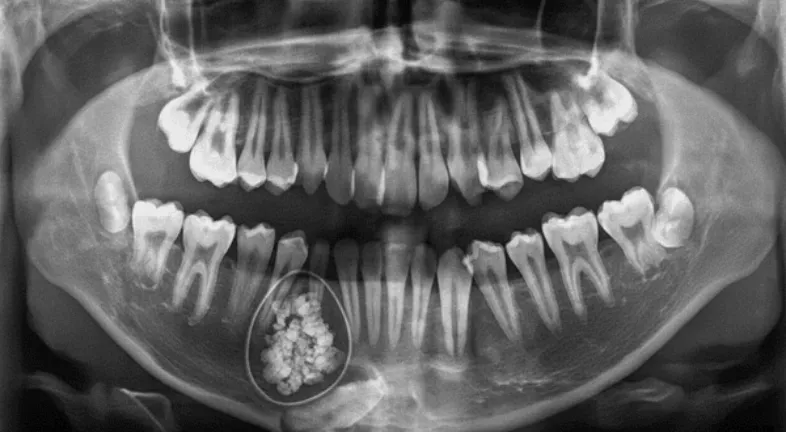 Odontomas: What They Are and How They're Treated
Odontomas: What They Are and How They're TreatedSome dental conditions are quiet. Too quiet, in fact. Odontomas fall into that category. They rarely make noise, yet they change things beneath the surface. And people usually have no idea about them. While malocclusions, teeth shifting, discoloration, or other cosmetic dental issues are fairly well known, odontomas are not. So, an odontoma is technically a type of tooth tumor. It’s benign, harmless, but oddly structured. Hence, it can interfere with tooth eruption, displace teeth, or cause swelling. However, there’s more to it. Here’s a deeper dive.
Read MoreQuick Links
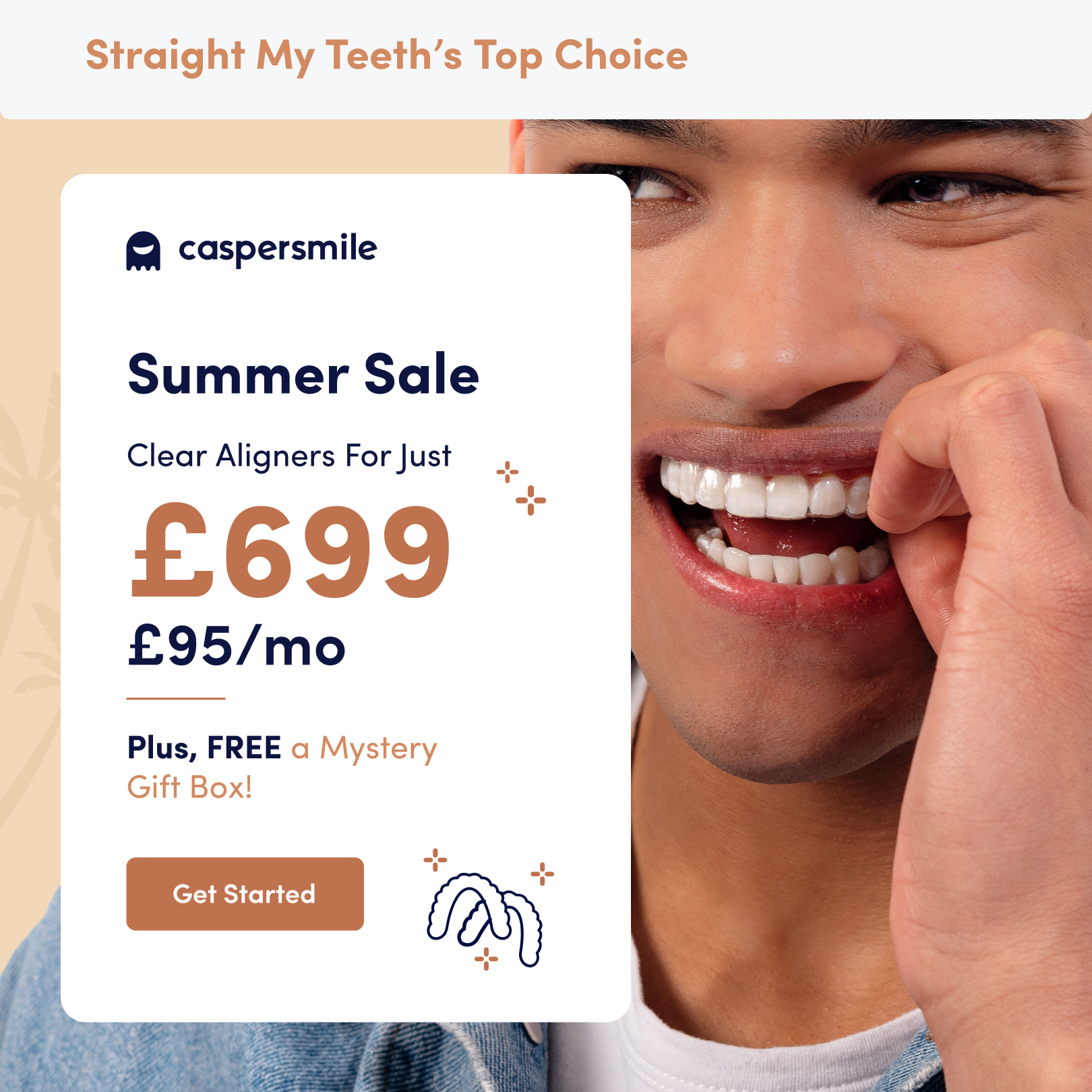
Heading